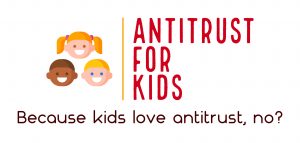
Author: Molly Donovan
Amelia is 9. She makes friendship bracelets that are quite good because she uses high-sheen thread sourced directly from Brazil. Amelia sells the bracelets at school, from anywhere between $5 and $10, depending on how much thread and labor is required to make a particular bracelet.
One day Amelia gets an email from her thread manufacturer stating: “Amelia, Bad news. The cost of embroidery thread has skyrocketed in Brazil—increases of 20% across all manufacturers. Do you want to continue with your regular procurement schedule?”
Amelia has no choice—the Brazilian floss is what makes her friendship bracelets so premium. “Yes,” she replies, “continue with the usual schedule.”
Naturally, due to her rising material costs, Amelia increases the price of her finished bracelets by 20%. Although not happy, the school friends buy them anyway because the bracelets are trending.
One day Amelia learns online that the Brazilian thread manufacturers had raised their prices illegally—in collusion with each other as part of a global thread cartel. As a result, each of the manufacturers is being prosecuted by the DOJ (save the amnesty applicant).
Wait. How could that be when all of the troublesome activity took place in Brazil? Who do the U.S. antitrust enforcers think they are? Well, little did the thread manufacturers know, there is a U.S. statute called the Foreign Trade Antitrust Improvements Act (FTAIA) under which activities taking place beyond U.S. borders *might* be within reach of U.S. antitrust laws.
[“They should have called me,” says the antitrust lawyer, “I would have told them that.”]
Amelia is incensed. She wonders whether the FTAIA gives her a cause of action even though she’s a U.S. purchaser and the relevant cartel activity took place in Brazil. She’s super savvy. She calls her antitrust lawyer.
Here’s what the lawyer said:
The FTAIA says that there are two main ways in which foreign conduct becomes subject to private claims in the U.S.: there’s import commerce or direct effects. The language of the statute itself is super confusing—even to grown-up lawyers—so, here’s a relatively simple way to break it down:
- Import Commerce. Amelia’s is the definitive example of import commerce, i.e., a transaction between an overseas conspirator and a purchaser in the United States. The conspirator invoiced Amelia in the United States and shipped the product directly to her. Pretty clear cut—that’s import commerce and it’s actionable in the United States.
But say that the thread makers first sold the thread to distributors in Brazil and it was the distributors who imported the thread to the United States with no involvement from the manufacturers. That may “count” against the manufacturers as import commerce even though the manufacturers imported nothing to the United States themselves. Depending on the jurisdiction, some U.S. courts say that so long as conspirators targeted a U.S. import market, you have import commerce for purposes of the FTAIA. As a practical matter, targeting could simply mean that the conspirators discussed the fact that thread gets distributed worldwide, including in the United States, so potentially, this is a rather loose test.
- Direct Effects. For foreign cartel conduct to meet the direct effects test, the conduct must have a direct, substantial and reasonably foreseeable effect on U.S. commerce and the U.S. effect must give rise to the plaintiff’s claim. What? Let’s unpack it:
- Direct: if the U.S. effect comes immediately after the foreign price-fix, with no intervening steps, it’s direct.
Some courts have adopted an even looser standard—even if the U.S. effect is not immediate, so long as the product enters the U.S. reasonably close in time and steps to the initial sale of the price-fixed product, it’s direct.
For Amelia, there are no steps between the foreign fix and her U.S. purchase, so she’s good here.
- Substantial: this has come up mainly in component-part cases—where one part of a finished product was subject to the foreign price-fix and the question is whether the component part is too small in size and cost relative to the finished good for the effect of the price-fix to be considered “substantial.”
While it’s not an issue for Amelia, it would be an issue for Amelia’s school friends who did not buy the thread itself, but did buy the finished bracelets. Since thread is the major material component and makes up the entire cost of a bracelet, excluding labor and overhead, it’s safe to say that the U.S. effect on the price of the thread could be “substantial” to a bracelet buyer, particularly if lots of thread came into the United States.
- Reasonably Foreseeable: this prong hasn’t been litigated a whole lot either, but an objective test seems to be in order, e., there’s reasonable foreseeability if a reasonable person would expect the price-fixed product to wind up in the United States—even if the defendants themselves didn’t have that understanding or didn’t think about it.
- Gives Rise To: the private plaintiffs who have faced challenges here purchased the relevant products outside the United States and argued that prices increased globally, so that there is some U.S. effect in play. In those cases, the effect in the U.S. may not “give rise to” a claim based on non-U.S. purchases. Amelia doesn’t have an issue here.
Bottom line: the FTAIA is not a serious hurdle for Amelia’s claim against the Brazilian thread makers—she can sue all of them on a theory of joint and several liability for trebled damages.
Morals of the Story:
Continue reading →
 The Antitrust Attorney Blog
The Antitrust Attorney Blog










